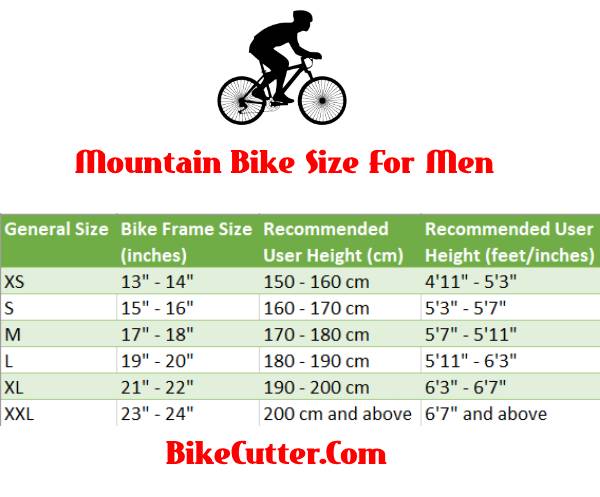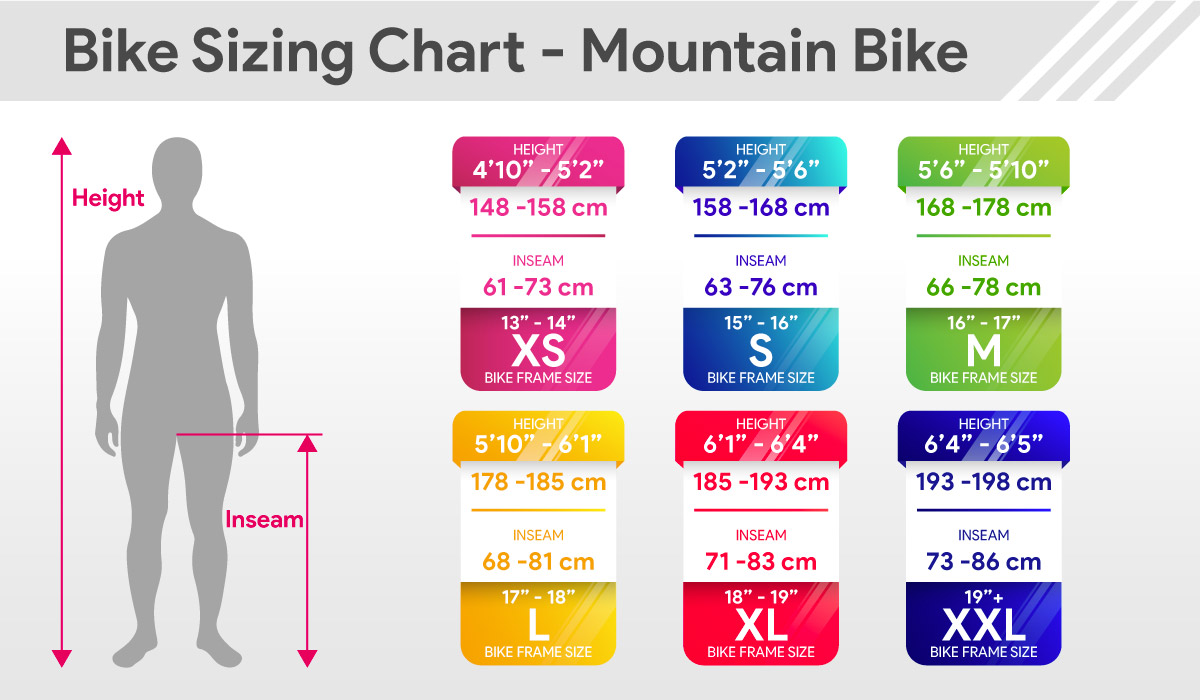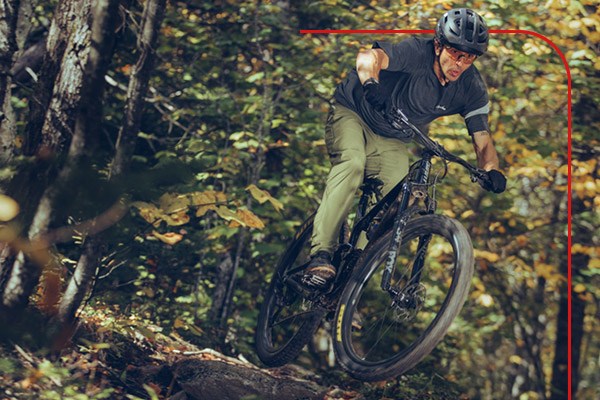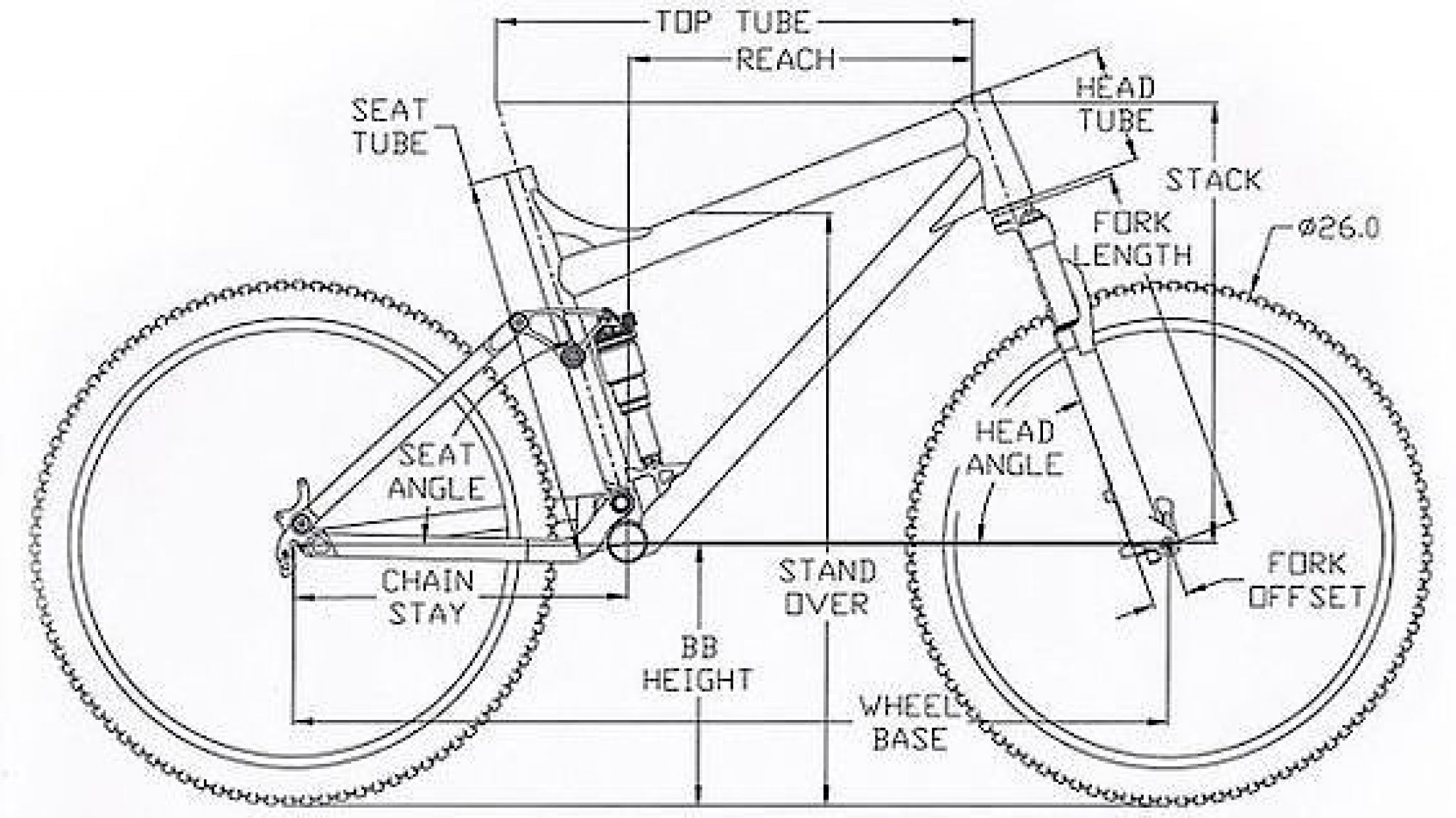Why Mountain Bike Size Matters for a Comfortable Ride
Choosing the right mountain bike size is crucial for a comfortable and safe ride. A poorly fitting bike can lead to discomfort, fatigue, and even injury. When a bike is too small or too large, it can cause a range of problems, from back and neck pain to poor handling and stability. This is why it’s essential to consider the importance of mountain bike size when selecting a new bike.
One of the primary reasons why mountain bike size matters is that it affects the rider’s position on the bike. When the bike is the right size, the rider can maintain a comfortable position, with their feet flat on the ground and their hands in a relaxed position on the handlebars. This allows for optimal control and balance, making it easier to navigate challenging terrain.
In addition to comfort and control, mountain bike size also plays a critical role in safety. A bike that is too small or too large can increase the risk of accidents, particularly when riding on technical trails or at high speeds. When the bike is the right size, the rider can react quickly and confidently to changing conditions, reducing the risk of injury or accident.
So, what size mountain bike do you need? The answer depends on a range of factors, including your height, inseam, and riding style. In general, mountain bikes come in a range of sizes, from small to extra-large, each designed to accommodate riders of different heights and inseams. By considering these factors and selecting a bike that is the right size, you can ensure a comfortable and safe ride, and get the most out of your mountain biking experience.
Whether you’re a seasoned mountain biker or just starting out, choosing the right bike size is essential for a fun and safe ride. By understanding the importance of mountain bike size and selecting a bike that is the right fit, you can enjoy the many benefits of mountain biking, from improved physical fitness to increased confidence and skill.
Understanding Mountain Bike Sizing: A Beginner’s Guide
Mountain bike sizing can be a complex and confusing topic, especially for beginners. With so many different types of bikes and sizing options available, it can be difficult to know where to start. However, understanding mountain bike sizing is crucial for finding the right bike and ensuring a comfortable and safe ride.
There are several types of mountain bikes, each with its own unique sizing characteristics. Cross-country bikes, for example, tend to have a more upright riding position and a smaller frame size, while downhill bikes have a more aggressive riding position and a larger frame size. Trail bikes, on the other hand, fall somewhere in between, with a versatile riding position and a medium-sized frame.
When it comes to mountain bike sizing, there are several key factors to consider. Rider height and inseam are two of the most important factors, as they determine the ideal frame size and standover height. Riding style is also an important consideration, as it affects the type of bike and sizing that is best suited to the rider’s needs.
For example, a rider who is 5’9″ with an inseam of 32″ may need a medium-sized frame with a standover height of around 28-30″. However, if the rider has a more aggressive riding style, they may prefer a larger frame size with a longer reach and a more slack head angle.
So, what size mountain bike do you need? The answer depends on a range of factors, including your height, inseam, and riding style. By understanding these factors and how they affect mountain bike sizing, you can find the right bike and enjoy a comfortable and safe ride.
It’s also important to note that mountain bike sizing can vary between brands and models. Some brands may have a more aggressive or relaxed sizing, while others may have a more traditional or conservative sizing. This is why it’s essential to consult with bike shop staff and test ride bikes before making a purchase.
By taking the time to understand mountain bike sizing and how it affects the ride, you can find the perfect bike for your needs and enjoy the many benefits of mountain biking. Whether you’re a seasoned pro or just starting out, the right bike size can make all the difference in your riding experience.
How to Measure Yourself for a Mountain Bike
To determine the right mountain bike size, you’ll need to take a few measurements. Don’t worry, it’s easier than you think With a few simple steps, you can get the measurements you need to find the perfect bike.
First, you’ll need to measure your height. Stand up straight against a wall and have someone mark the top of your head with a pencil. Then, measure the distance from the floor to the mark. This will give you your height in inches or centimeters.
Next, you’ll need to measure your inseam. This is the distance from the top of your inner thigh to the bottom of your ankle. You can do this by standing up straight and placing a book or ruler between your legs, just above the knee. Then, measure the distance from the top of the book or ruler to the floor.
Finally, you’ll need to measure your arm length. This is the distance from the center of your back to the tip of your middle finger. You can do this by standing up straight and holding your arm straight out to the side. Then, measure the distance from the center of your back to the tip of your middle finger.
Once you have these measurements, you can use online sizing charts to determine the right mountain bike size for you. Most bike manufacturers provide sizing charts on their websites, which can help you determine the right size based on your measurements.
It’s also a good idea to consult with bike shop staff, as they can provide valuable guidance and help you find the perfect bike. They can also help you determine the right size based on your riding style and preferences.
So, what size mountain bike do you need? By taking the time to measure yourself and consult with bike shop staff, you can find the perfect bike for your needs and enjoy a comfortable and safe ride.
Remember, the right mountain bike size is crucial for a comfortable and safe ride. Don’t be afraid to ask for help, and don’t settle for a bike that doesn’t fit properly. With a little patience and persistence, you can find the perfect bike and enjoy the many benefits of mountain biking.
Mountain Bike Size Charts: A Comparison of Top Brands
When it comes to choosing the right mountain bike size, it’s essential to consult the size charts of top brands. Each brand has its own unique sizing system, and understanding these differences can help you find the perfect bike. In this section, we’ll compare the size charts of Trek, Specialized, and Giant, three of the most popular mountain bike brands.
Trek’s size chart is based on the rider’s height and inseam. They offer a range of sizes, from 14 to 22 inches, and provide a detailed chart to help you determine the right size based on your measurements. Specialized, on the other hand, uses a combination of height and inseam to determine the right size. Their size chart is more detailed, with specific recommendations for different types of riding, such as cross-country and downhill.
Giant’s size chart is similar to Trek’s, with a focus on height and inseam. However, they also provide a “fit calculator” that allows you to input your measurements and get a personalized size recommendation. This can be a useful tool for riders who are unsure about their size.
When comparing the size charts of these top brands, it’s clear that there are some differences. Trek’s sizes tend to run a bit smaller than Specialized’s, while Giant’s sizes are generally more consistent across different models. However, these differences are relatively minor, and the most important thing is to find a bike that fits you comfortably.
So, what size mountain bike do you need? By consulting the size charts of top brands and taking into account your height, inseam, and riding style, you can find the perfect bike for your needs. Remember to always test ride a bike before purchasing, and don’t be afraid to ask for help from bike shop staff.
In addition to the size charts, it’s also important to consider the type of riding you’ll be doing. Different types of riding require different types of bikes, and the size chart should reflect this. For example, a cross-country bike will typically have a smaller frame size than a downhill bike, due to the different riding styles and terrain.
By taking the time to understand the size charts of top brands and considering your riding style and preferences, you can find the perfect mountain bike size for your needs. Happy trails!
The Importance of Standover Height and Reach
When it comes to mountain bike sizing, two of the most important factors to consider are standover height and reach. These measurements can greatly affect the bike’s handling, stability, and overall ride quality.
Standover height refers to the distance between the ground and the top tube of the bike. This measurement is important because it affects the bike’s stability and handling. A bike with a low standover height can be more stable and easier to handle, while a bike with a high standover height can be more challenging to ride.
Reach, on the other hand, refers to the distance between the saddle and the handlebars. This measurement is important because it affects the bike’s comfort and handling. A bike with a long reach can be more comfortable for riders with longer arms, while a bike with a short reach can be more comfortable for riders with shorter arms.
When choosing a mountain bike, it’s essential to consider both standover height and reach. A bike that is too small or too large can be uncomfortable and difficult to handle. By considering these factors, you can find a bike that fits you perfectly and provides a comfortable and enjoyable ride.
So, what size mountain bike do you need? By considering standover height and reach, you can find a bike that fits you perfectly. Remember to always test ride a bike before purchasing, and don’t be afraid to ask for help from bike shop staff.
In addition to standover height and reach, there are other factors to consider when choosing a mountain bike. These include the bike’s wheel size, suspension travel, and gearing. By considering these factors, you can find a bike that meets your specific needs and provides a comfortable and enjoyable ride.
By taking the time to understand the importance of standover height and reach, you can find a mountain bike that fits you perfectly and provides a comfortable and enjoyable ride. Happy trails!
Real-World Examples: Mountain Bike Size Reviews
When it comes to choosing the right mountain bike size, it’s helpful to look at real-world examples of bikes that have been reviewed by riders. In this section, we’ll take a look at some popular mountain bikes and their sizing reviews.
The Trek Fuel EX is a popular trail bike that is known for its comfortable and stable ride. According to reviews, the Fuel EX has a relatively long reach and a low standover height, making it a great choice for riders with longer arms and legs. However, some riders have noted that the bike can feel a bit too large for smaller riders.
The Specialized Stumpjumper is another popular trail bike that is known for its versatility and comfort. According to reviews, the Stumpjumper has a relatively short reach and a high standover height, making it a great choice for riders with shorter arms and legs. However, some riders have noted that the bike can feel a bit too small for larger riders.
When looking at these reviews, it’s clear that mountain bike sizing can be complex and dependent on a variety of factors. However, by considering the pros and cons of each bike’s sizing, you can find a bike that fits you perfectly and provides a comfortable and enjoyable ride.
So, what size mountain bike do you need? By considering the sizing reviews of popular bikes like the Trek Fuel EX and the Specialized Stumpjumper, you can find a bike that meets your specific needs and provides a comfortable and enjoyable ride. Remember to always test ride a bike before purchasing, and don’t be afraid to ask for help from bike shop staff.
In addition to these reviews, it’s also important to consider the type of riding you’ll be doing. Different types of riding require different types of bikes, and the sizing reviews should reflect this. For example, a cross-country bike will typically have a longer reach and a lower standover height than a downhill bike, due to the different riding styles and terrain.
By taking the time to understand the sizing reviews of popular mountain bikes, you can find a bike that fits you perfectly and provides a comfortable and enjoyable ride. Happy trails!
Test Ride Before You Buy: Ensuring the Perfect Fit
Once you’ve narrowed down your options and found a few mountain bikes that seem like a good fit, it’s time to take them for a test ride. Test riding a bike is the best way to ensure that it’s the right size and fit for you.
When test riding a bike, pay attention to how it feels. Does it feel comfortable and stable? Can you easily reach the handlebars and pedals? Do you feel like you’re in control of the bike?
Also, pay attention to the bike’s handling and performance. Does it corner well? Does it feel responsive and agile? Does it have enough suspension travel to absorb bumps and rough terrain?
Additionally, consider the bike’s ergonomics. Are the handlebars and saddle at a comfortable height? Are the pedals and crankarms at a comfortable distance from the saddle?
By test riding a bike, you can get a sense of how it will perform on the trail and whether it’s the right size and fit for you. Don’t be afraid to ask the bike shop staff for their opinion and advice. They can help you determine whether the bike is a good fit and make any necessary adjustments.
So, what size mountain bike do you need? By test riding a bike and paying attention to how it feels and performs, you can find a bike that’s the perfect fit for you. Remember to always test ride a bike before purchasing, and don’t be afraid to ask for help from bike shop staff.
In addition to test riding a bike, it’s also important to consider the type of riding you’ll be doing. Different types of riding require different types of bikes, and the test ride should reflect this. For example, if you’ll be doing a lot of downhill riding, you’ll want to test ride a bike with a slack head angle and a long wheelbase.
By taking the time to test ride a bike and considering the type of riding you’ll be doing, you can find a bike that’s the perfect fit for you and provides a comfortable and enjoyable ride. Happy trails!
Conclusion: Finding Your Ideal Mountain Bike Size
Choosing the right mountain bike size is crucial for a comfortable and safe ride. By considering the key factors that affect bike size, such as rider height, inseam, and riding style, you can find a bike that fits you perfectly.
In this article, we’ve provided a comprehensive guide to help you find your ideal mountain bike size. We’ve covered the importance of mountain bike size, the different types of bikes and their sizing variations, how to measure yourself for a mountain bike, and the importance of standover height and reach.
We’ve also compared the size charts of top mountain bike brands, provided real-world examples of mountain bike size reviews, and emphasized the importance of test riding a bike before purchasing.
By following the tips and guidelines outlined in this article, you can find a mountain bike that fits you perfectly and provides a comfortable and enjoyable ride. Remember to always consult with bike shop staff and test ride bikes before making a purchase.
So, what size mountain bike do you need? By considering the key factors that affect bike size and following the tips outlined in this article, you can find a bike that’s the perfect fit for you. Happy trails!
Remember, finding the right mountain bike size is just the first step in enjoying a comfortable and safe ride. Always wear protective gear, follow safety guidelines, and ride within your ability level.
By taking the time to find your ideal mountain bike size and following safe riding practices, you can enjoy the many benefits of mountain biking, including improved physical fitness, increased confidence, and a deeper connection with nature.








